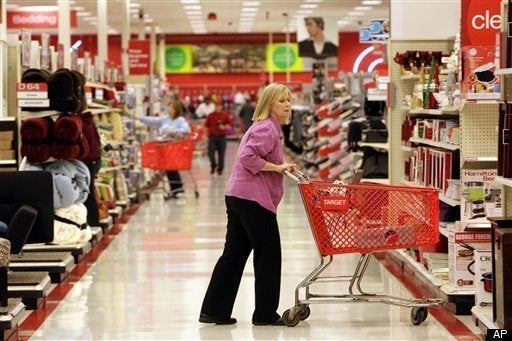
NEW YORK -- At least temporarily, the U.S. economy has slowed to a crawl.
U.S. gross domestic product -- one of the key gauges of overall economic growth -– fell dramatically to 1.8 percent in the first three months of this year after growing at a rate of 3.1 percent at the end of last year, according to figures released by the Commerce Department on Thursday.
While some economists argue the quarterly figure could simply be an economic blip caused by harsh winter weather and spiking gas prices, others warn that the recovery could still be a jobless one.
A dramatic drop in consumer spending -- which makes up roughly 70 percent of economic activity -- weighed GDP in the first part of the year. Bad weather hurt construction and limited consumer spending, keeping many Americans away from winter sales in January and February.
As the weather improved, soaring gas prices and higher grocery bills limited spending for many people. Consumer spending fell from 4 percent at the end of last year to 2.7 percent at the beginning of this year, according to the Commerce Department figures.
"We think the GDP numbers are a little bit of a fluke," said Nariman Behravesh, chief economist at IHS Global Insight, a financial and economic analysis firm. "There is a disconnect between the GDP numbers and some of the other data on the U.S. economy,” said Behravesh. “The other numbers we're seeing are more consistent with 4 percent growth than 1.8 percent growth."
Behravesh said he believes growth is already picking up following the low of the first quarter of 2011. GDP numbers often lag behind other data, and revisions of the data released as the Commerce Department gets more information could reveal growth was stronger than thought, he argued.
But some of the dropoff in consumer spending in the first part of 2011 was also a function of its relative height at the end of 2010, when U.S. consumers spent in earnest for the first time since the recession. The holiday season, the fact that many people had saved up during the downturn, looser financing for large purchases and even the Federal Reserve's quantitative easing program pushed personal consumption expenditures to 4 percent for the last quarter of 2010, said Constance Hunter, chief economist at the investment banking firm Aladdin Capital.
For the overall year, however, that spending grew by just 1.7 percent, Hunter added. "So if we can maintain anywhere close to the current 2.7 percent rate of growth in 2011, we will be doing much better than in 2010," said Hunter.
"It's not all a bed of roses, we have higher gas prices," Hunter said, adding that she didn't believe they'd stay high, as many were already cutting down on driving, which she argued, would eventually drive demand, and prices down. But, she cautioned, jobless claims for April didn't bode well for overall unemployment figures. "The problem is the Fed is coming up against the boundary of their effectiveness in terms of generating jobs growth and Bernanke said as much," she said, referring to the Federal Reserve’s closely watched Wednesday press conference.
During the central bank's first-ever presser, Fed Chairman Ben Bernanke said growth will lag this year as inflation picks up. The Fed also lowered GDP estimates for the entire year to 3.3 percent from 3.9 percent.
Even the Fed's forecast of growth isn’t enough to create a significant number of new jobs, said Josh Bivens, an economist at the Economic Policy Institute, a Washington think tank. "Just to keep our currently high unemployment rate stable, we've actually got to put upward pressure on it," he said. "What it means for people is that it's not going to get appreciably easier to find a job any time soon unless we start seeing much higher GDP growth numbers."
Other economists argued that there was enough growth to sustain moderate increases in employment, with manufacturing alone growing by 9 percent in the first part of 2011. Unemployment fell to a two-year low of 8.8 percent in March after the economy added 216,000 jobs.
Many employers have wrung all the productivity they can out of employed Americans, said Lynn Reaser, chief economist at Point Loma Nazarene University in San Diego. "Companies do need to take on additional employees because otherwise the huge gains in productivity that we saw in 2010 are not sustainable," she argued.
Reaser also cautioned against directly linking GDP and jobs, explaining that the economic impact of various events often lagged behind, and that both growth and employment fluctuated from quarter to quarter.
“We're seeing growth, it's just disappointing,” said Kathy Bostjancic, director for macroeconomic analysis at the Conference Board, an economic research group. And what little growth there was would be buffeted by major headwinds, like high unemployment and the depressed housing market, she said.
Adding to the strain, state and local governments have drastically cut spending, and the same is about to happen nationally, Bostjancic said, with wrangling over the best way to cut spending in Washington.
"We're going to see more contraction at the federal level," said Bostjancic. Government spending and hiring will be slashed, and industries and jobs dependent on them will also take a hit, she warned.